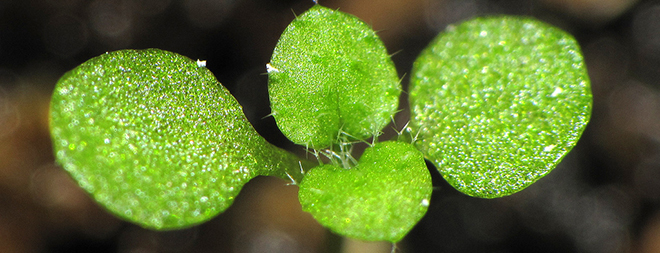
(ISNS) -- For plant and animal cells, the vast bulk of their DNA is tightly packaged and tucked away within a storage and processing facility inside their cells known as the nucleus.
However, cells also carry a small number of genes in specialized compartments, called organelles, which lie outside of the nucleus. These are the mitochondria, which generate energy for plant and animal cells, and chloroplasts, which carry out photosynthesis in plant cells.
A new study now finds that organellar genes can have a much larger effect on a cell's metabolism than would be expected based on their numbers.
The finding, published online this month in the journal eLife, could have implications for future treatments of inherited diseases in humans, scientists said.
"Whenever you see a study where the scientists say they've linked this gene with this disease, or that they've found the gene that controls this behavior, they almost always looked solely at genes within the nucleus," said the study's leader Daniel Kliebenstein, a plant geneticist at the University of California, Davis.
In their study, Kliebenstein and his team studied how variation in 25,000 nuclear and 200 organellar genes affected the concentrations of thousands of individual chemicals, or metabolites, in leaf tissues of Arabidopsis, a small flowering plant related to cabbage and mustard.
The experiment involved more than 300 Arabidopsis plants, all of which had the same nuclear genetic diversity, but differing chloroplast and mitochondrial genes.
Sign up for the Live Science daily newsletter now
Get the world’s most fascinating discoveries delivered straight to your inbox.
When the scientists measured different metabolite concentrations in the plants — everything from sugars and amino acids, to fat molecules — they found that organellar genes appeared to influence the concentrations of about 80 percent of them, and that the effects could range from 25 to 200 percent.
Edward Morrow, a biologist at the University of Sussex in the U.K., said that scientists have suspected for nearly 20 years that organellar genes can "punch above their weight," but the current research is the one of the most comprehensive studies of the phenomenon to date.
The paper revealed volumes of amazing detail of the effects of organellar genes on nuclear genes, said Morrow, who was not involved in the study. "[It's] quite stunning, really."
Alisdair Fernie, a plant geneticist at the Max Planck Institute of molecular plant physiology in Potsdam, Germany, was also surprised by the extent of the effect that organellar DNA appear to have on cellular metabolism.
"The extent of these changes is great," said Fernie, who also did not participate in the study. "I would have anticipated them to be lesser."
While their experiments were conducted using plants, Kliebenstein thinks the impact of organellar genes could also be significant in mammalian cells, including those of humans.
"I can't see a reason why it would be unique [to plants]," he said.
The University of Sussex's Morrow agreed. "All the ingredients for expecting the same kinds of interactions to occur between the genomes in human cells are there," Morrow said.
If confirmed in animal cells, the findings could mean that studies aiming to link conditions such as obesity to specific genes should also take the effects of organellar genes into account, Kliebenstein said.
The new study could also have implications for in vitro fertilization therapies aimed at preventing diseases caused by faulty mitochondria being passed from mother to child.
One of the methods being proposed involves removing the nucleus from an egg that has faulty mitochondria and transferring it to a donor's egg that has healthy mitochondria and which has already had its nucleus removed. The newly constructed egg would then be fertilized using conventional in vitro fertilization techniques.
The technique has only been tested in animals so far, but the British government recently proposed draft regulations for so-called "three-parent embryos."
That worries Morrow and other scientists because, as the findings by Kliebenstein's group and others now show, there might be unanticipated and far-reaching interactions between organellar genes and their nuclear counterparts.
The interactions between organellar and cellular DNA "are the result of many generations of coevolution," Morrow said, "and it seems that breaking them up therapeutically may result in changes in the offspring in as yet unknown ways.
"That's my main worry, that the experiment in humans to check for these effects has not been done."
This story was provided by Inside Science News Service. Ker Than is a freelance writer based in Southern California. He tweets at @kerthan.










